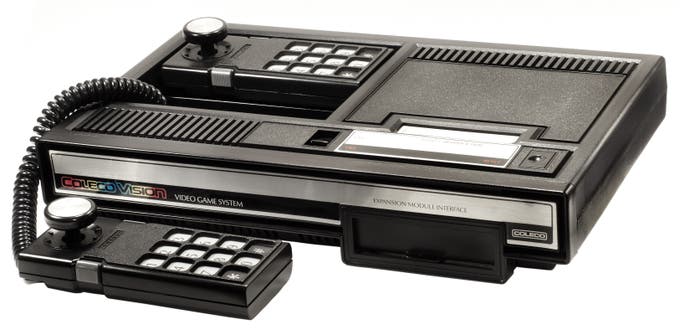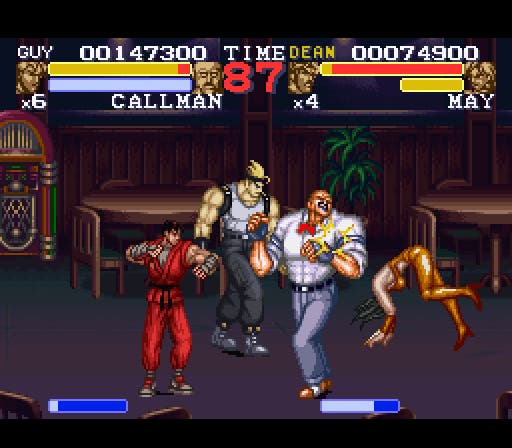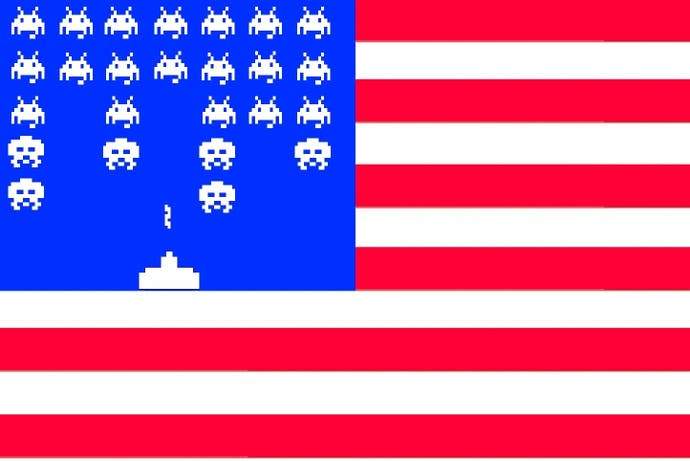Letter from America
Why Colecovision could have been the Xbox of its era.
It's pipe, slippers and rocking chair time this week, as I regale you young 'uns with more tales from the olden days. So if you're sitting comfortably, I'll begin.
This week, Rantmedia Games, makers of Vectrex Regeneration, an iOS app that emulates the classic vector graphic console, Kickstarted one for Colecovision, one of my favourite old consoles. Whether or not they'll be successful remains to be seen - I most certainly hope the app will go the distance - but hearing Colecovision being mentioned reminded me of just how devastating unfortunate timing can be to a machine - great though it may be.

Released by the Connecticut Leather Company, a business that had struck gold selling ridiculously popular, phenomenally ugly Cabbage Patch Kids dolls in the very early 80s, Colecovision was one of the last of the second-gen systems. That means it shares a place in gaming history with the likes of the Atari VCS, the console that kicked off that generation some five years prior. But despite being considered a peer to Atari's faux wood clad console, it's technically much closer to the machines that appeared less than a year later and essentially ushered in the third generation of consoles: the Nintendo Entertainment System and Sega's much lesser-known SG-1000. What I find very interesting, being of a seriously nerdy bent, is that Sega's SG-1000 console is pretty much a Colecovision clone, sharing largely the same technology, and apparently even able to play Colecovision games (though I have never seen this myself). Getting even more nerdy, when Sega launched its Master System in 1985, it was powered by Colecovision's CPU and featured the same sound chip. Indeed, the only real difference between Coleco and the Master System is that the latter has a slightly better GPU. Which is much of the reason why the Japanese version of the Master System was backwards compatible with the SG-1000.
I first played Colecovision back in '83 when I was a wee scamp who'd just won the Computer and Video Games Arcade Championships. I was invited down to the launch event - the first press day I ever went to, even though I wasn't quite a journalist at the time - and was amazed at just how good many of the Coleco arcade conversions were. “Arcade perfect,” to use a classic phrase of yore. Zaxxon, Donkey Kong and Venture stood out in particular: no other machine came close to that kind of authenticity. The only thing I didn't like was Coleco's controllers, which really were legendarily awful (though you could swap them out for a regular joystick once you started a game using the numbered keypad).
However, while I was enjoying playing this shiny new console, over in the States, the industry was sliding into a calamitous collapse the likes of which we've never seen before or since. In 1983, following years of video gaming revenue growth to a peak of over $3.2 billion, hundreds of companies were trying to cash in on the boom. But with no less than 10 consoles competing for gamers' money, and a complete lack of console manufacturer publishing or quality control resulting in a games market becoming saturated with product, the vast majority of which was extremely poor, the video games business imploded. Within two years, games industry revenue dropped an astonishing 97%, leaving a smoking crater from which few escaped.
Unfortunately for Colecovision, it was on the wrong side of that crash, and it ended up being caught in the implosion with everything else. Yet despite that collapsing market, the machine did manage to sell 1 million units - an impressive feat considering most other machines at the time simply stopped selling - but that wasn't enough to save it. Its parent company pulled out of gaming, and eventually filed for bankruptcy in 1988.

Because so many businesses, investors and financial institutions were burned by the games crash, few were prepared to invest any kind of money in video games post-collapse: they were seen as a fad whose time had come and gone. Of course, in retrospect this is a ludicrous view - one that Nintendo took full advantage of to devastating effect by launching its NES into a market that had zero competition other than Sega, whose Master System ended up being just a tiny speed bump on the road to utter Nintendo dominance.
Nintendo's bold move into the states made Japan the centre of the world for gaming hardware, a position it would hold for almost two decades until Microsoft finally muscled its way onto the scene. And that's where I see a really interesting “what if.” Considering just how good Colecovision was, if it had been launched after the crash, or had hung on just long enough to weather it, I wonder how well it might have done. While I'm sure Nintendo would have sold very well indeed, I think Colecovision would have likely given it a very good run for its money. Indeed, I see the two as the potential Xbox and PlayStation of the day: giving rise to a competitive market, rather than one where Nintendo dominated as uncontested overlord until Sega finally managed to redress the balance somewhat with its Megadrive in the following generation. And it makes me wonder just how different the games industry might be today if it'd happened. Not that different in terms of the technology - but definitely in terms of the names on the boxes we use to play games, and perhaps the structure of the games publishing world.
So anyway. Needless to say, don't ever drink with me. I love this kind of games history and what-if stuff - so thanks for reading this far if you indeed did get this far.
Back to today, it's been quite a busy week for us over in the states. Last week the USgamer team each named their three most-anticipated PlayStation 4 games. This week, we all did the same for the Xbox One launch lineup. For what it's worth, I felt spoiled for choice on PS4, but struggled to be genuinely enthusiastic about the XbOne's roster of titles. It does have some great games coming up, but the launch lineup just isn't that exciting to me.
Big review of the week was Beyond Two Soulzzzzzzzzzzzzzz. Not my cup of tea, I'm afraid, and not exactly our reviewer's either. I wasn't a fan of Cage's last game, and I feel the same way about this. It's weird, because in some way I really appreciate and support what he's doing. But for a variety of reasons, I just find his games difficult to enjoy. Probably because I'm impatient, and I like games that let me press buttons to do things, rather than telling me to press buttons so I can watch things.
I did love seeing the community debate sparked by our article on Warface's revealing female skins, with some commenters writing what almost felt like dissertations to articulate their points of view. It's great to see this kind of community interaction, and so different from some of the utter garbage I see on some of the more popular sites, which sometimes seem a melting pot of hatred, angst, and ignorance.

Nintendo released Final Fight 3 this week on Virtual Console, so Jeremy took a good look at that and reckons it's Capcom's secret best brawler. I played the nadgers off the first two, but didn't get around to playing the third - but after reading what he posted, I think I'll be downloading that over this weekend.
The Nintendo theme continued with our preview of Tropical Freeze, the latest Donkey Kong game, and we also reviewed Pokémon X and Y, which generated plenty of comments because we didn't give it the glowing review everyone expected.
Finally, my fave article of the week was a GTA piece on the various attempts being made to manipulate the in-game BAWSAQ stock market using all sorts of trading tactics. A really interesting read; so much so that it got picked up by the Motley Fool.
See ya next time.
Jaz Rignall is editorial director of USgamer.net, an American version of Eurogamer that has lots of big pictures.

